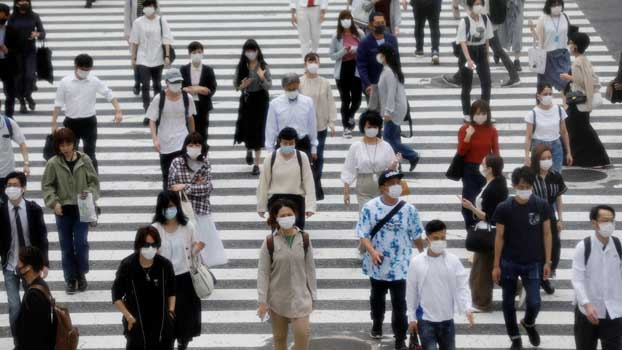The new normal that will arise after Covid-19
In the end, pandemics have helped accelerate globalisation

When pondering the question of what a post-coronavirus world will look like, it is essential to clearly distinguish the current age of Covid-19 from the aftermath it will leave when the virus finally burns itself out.
For practical purposes, let’s hypothetically say that the two phases are separated by the development and application of vaccines. In the age of COVID-19, the basic prevention mode has been to shelter in place. But that has its limitations, primarily for economic reasons. So the sensible thing to do is embrace a “new normal” way of life so long as infection rates are tamped down.
In Japan, as in other countries, the new way of life involves such measures as wearing masks, practicing social distancing, taking temperature measurements, washing hands and disinfecting our homes and places of business, as well as equipment. If infection rates surge once again, as they have in Europe, society must revert back to sheltering in place. In short, in the era of COVID-19, there are no other choices but to adapt, change social patterns and adjust to the new normal.
Additionally, in the post-COVID-19 era, the coronavirus should prove far less dangerous, eventually becoming as common as the flu. So in theory, concepts like sheltering in place would no longer be needed and a semblance of normalcy will return.
But that doesn’t mean life will completely revert to the way it was prior to COVID-19’s appearance on the world stage.
Since the pandemic’s outbreak, teleworking and video conferencing have become the norm. Teleworking has liberated people from paper-based business practices. Also, with nearly 40 million people living in the Tokyo metropolitan area, it was not uncommon for workers to spend more than two hours commuting to their jobs every day, a drudgery that working online has eliminated.
And the ability to be able to work from anywhere has freed many from space constraints. It’s difficult to imagine that people will let go of these positive changes. The post-COVID-19 world will be a hybrid society where telework plays a bigger role in the average person’s daily life.
Another question is what will happen to globalization. A long look back at history provides some insight on how globalization might manifest itself post-COVID-19.
The Black Death, also known as the plague and which occurred during the 14th century, was one of the deadliest-ever pandemics — killing one in three people in Europe at the time.
The first action taken back then was, of course, sheltering in place. As illustrated in Giovanni Boccaccio’s book “The Decameron,” many people believed the plague was punishment for blasphemy against God and turned to religion, packing churches to pray for deliverance. But despite their prayers, there was no respite from the disease.
This caused many people to turn away from the church and God. The mood at the time was embodied in phrases like carpe diem (seize the day), an attitude many people assumed in response to the trying times. This new way of looking at life eventually spawned the Italian Renaissance, which then spread throughout Europe. In simple terms, the plague sparked the Renaissance and in a way accelerated globalization.
The next big pandemic of sorts occurred during the Columbian Exchange in the 15th century when Europeans first crossed the Atlantic and began colonizing the Americas. It is said that about 90% of the native peoples of the New World died as a result of pathogens such as smallpox brought in from Europe. Still, pandemics did not stop migration to the new world from the old, with globalization continuing apace.
A third notable pandemic was the outbreak of the Spanish flu, which ravaged much of the world between 1918 and 1920. The global population at that time was about 2 billion people, 50 million of whom are believed to have succumbed to the disease.
The loss of life caused by Spanish flu led to the public growing weary of war, and became one of the driving forces behind the ending of World War I. After that, the League of Nations, the Washington Naval Treaty and the Locarno Treaties came into force, moving the world towards reconciliation and accelerating globalization by way of international cooperation.
In other words, in the end, pandemics have helped accelerate globalization.
Looking at history in this way, and despite populist politicians who place the well-being of their countries above all others — creating the appearance of a divided world — it leaves hope that globalization will accelerate when the current pandemic crisis ends.
Another factor behind globalization is that the economies of today’s economically advanced nations were built on access to resources, primarily fossil fuels, iron ore and rubber — the three main drivers of the Industrial Revolution and the modern world with its automobiles and airplanes.
Because these resources are not evenly distributed and dispersed across the globe, only a few countries have sufficient access to needed raw materials, like the United States with its abundance of fossil fuels. Because countries like Japan, Germany, and France lack many essential resources, they have had no choice but to look to the rest of the world to meet their needs.
While the resources that are considered essential may have changed over time, the fact that such needed commodities are not evenly distributed is still true, which is why globalization will remain strong beyond the pandemic and into the future.
Haruaki Deguchi is the president of Ritsumeikan Asia Pacific University in Beppu, Oita Prefecture.
Source: Japan Times


